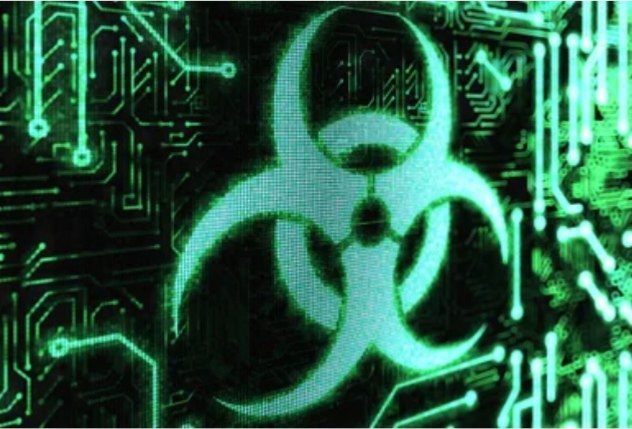Chemical and biological weapons (CBWs) have been tools of warfare for a long time. They have borne disastrous results in both World Wars and several conflicts worldwide. Due to their lethality, they are considered a Weapon of Mass Destruction (WMD) by the United Nations. Despite a ban imposed on their use, this threat is far from over. In fact, emerging technologies have added new dimensions to this type of warfare.
Recently the use of AI in drug discovery has sparked a new debate regarding its role in chemical and biological warfare. The phenomena was discussed at the Spiez Convergence conference organised by the Swiss Federal Institute for Nuclear, Biological and Chemical Protection, Spiez Laboratory. The conference aims to bring together the scientific and disarmament group of global experts to evaluate the status of chemical and biological fields, assess potential challenges and devise measures to effectively manage existing threats. Among other companies, Collaborations Pharmaceuticals, a drug discovery company, was invited to present its findings regarding misuse of drug-discovery technology. The company employs various Machine Learning (ML) models to assess the role of AI in virtually designing new compounds for drug development. By doing so, they assess the toxicity level of the newly discovered compounds and filter out the more dangerous ones. To explore the potential misuse of AI in drug discovery, ML models were reversed to find toxic molecules instead of filtering them out. A software by the name of ‘MegaSyn’ was tasked to design toxic molecules using the available datasets. After experimenting, experts published a paper titled ‘Dual use of artificial-intelligence-powered drug discovery’ in Nature Machine Intelligence. The authors’ findings manifest the level of surprise and concern which prevailed afterwards. In less than six hours, approximately 40,000 new compounds were designed in the process. These compounds fell well within the perimeters of being a chemical weapon. What was shocking was their level of toxicity. The discovered molecules were not only new but also more detrimental than existing warfare agents. Many compounds were found to be even more harmful than VX, which remains one of the most potent nerve agents whose small amount is enough to cause death in minutes.
This highlights the relative ease with which such dangerous dual nature of AI can be accessed and exploited. The same ML models that can be used to assess the toxicity of chemical agents can also be used to design more lethal compounds that can act as CBWs. Advancement in these ML systems will inadvertently increase corresponding risks. The experiment implies that toxic datasets available in open source, coupled with coding and ML capabilities, can open pathways for designing such weapons.
To be fair, AI-driven chemical/biological warfare is not an immediate threat. The mentioned experiment remained confined to the virtual setup and did not include the actual synthesis of the toxic compounds themselves which remains a demanding task. Most of the chemical building blocks of such substances are also regulated. However, this is something that can become a reality in the future.
Given the vast number of commercial companies with the requisite capabilities and insufficient regulations, synthesis can become a possibility. It is equally worrisome that new retrosynthesis software tools are also improving simultaneously, making it easier to synthesise chemical/biological warfare agents by taking novel routes. Resultantly, national and international observing bodies can be circumvented to achieve such ends.
If this idea shapes turns into reality, it will become a critical challenge, particularly vis-à-vis non-state actors. The higher toxicity of such new ‘weapons’ also calls into question existing legal conventions regarding chemical/biological warfare and contests whether current frameworks are well-equipped to address this threat.
Hence, there is a need to closely look into this matter at the global level. The experts who conducted this experiment have acknowledged that it will be a challenging task to come up with a viable solution to counter such threats. The scientific community, experts, academia and policymakers need to engage in dialogue regarding the implications of such technologies. More resources need to be invested in enhancing cooperation between governments and biochemical industries for effective legal frameworks. It is also the responsibility of private industries to have stringent compliance standards. Moreover, concerned institutions should continue to convene more conferences similar to the Spiez Convergence to create awareness about such possible developments. It is likely that emerging technologies will continue to pose novel challenges for chemical and biological warfare. Hence, timely measures must be taken to mitigate the risks from dual use technologies.
Shaza Arif is a Researcher at the Centre for Aerospace & Security Studies (CASS), Islamabad, Pakistan. She can be reached at cass.thinkers@gmail.com
Image Source: Sohn, Rebecca .2022, “AI Drug Discovery Systems Might Be Repurposed to Make Chemical Weapons, Researchers Warn”, Scientific American, April 2021,https://www.scientificamerican.com/article/ai-drug-discovery-systems-might-be-repurposed-to-make-chemical-weapons-researchers-warn/




